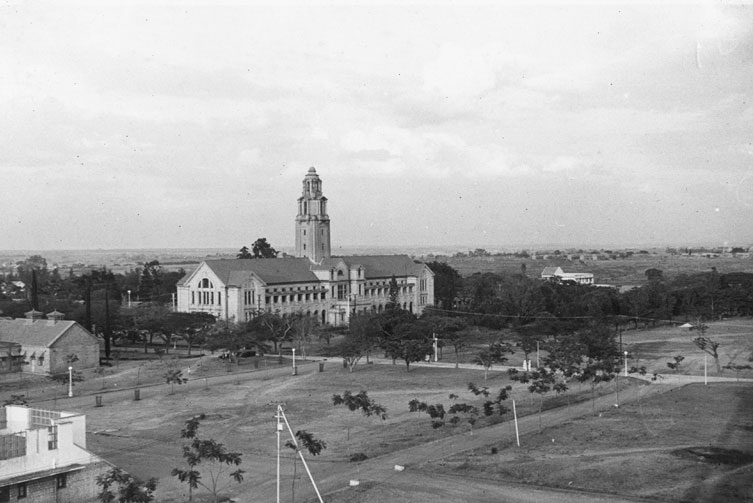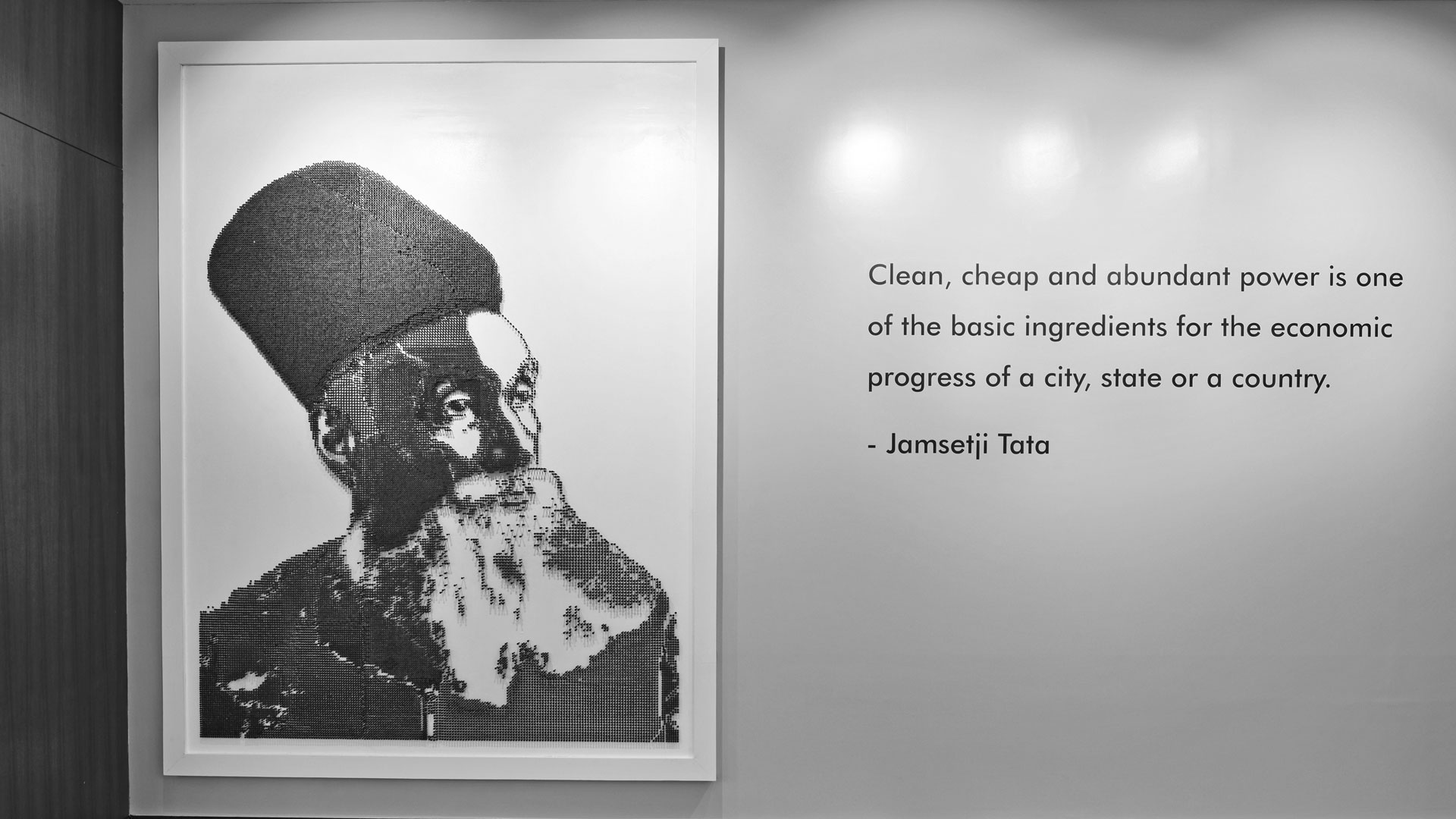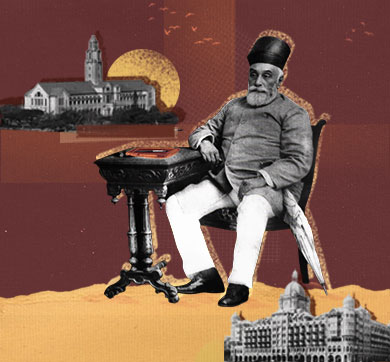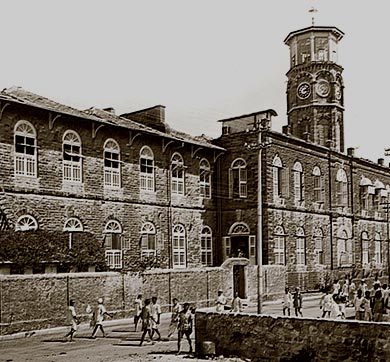March 2023 | 1442 words | 5-minute read
Fifty and a man of fortune, everyone expected Jamsetji to start a third and a fourth textile mill. In America, his contemporary John Rockefeller had amassed a staggering fortune with his oil wealth. When asked how much more money he wanted to make, he replied, ‘Just a little more!’
A lesser personality than Jamsetji would have been satisfied with adding to his wealth, creating one mill after another but nothing small contented him. Jamsetji appears to have decided that business was no longer his main business. The nation was his business. Slowly within him was developing a passion which was to fructify in years to come. His passion was to uplift the poor of his country.
Comfortable as he was in his personal life, he was never content with the condition of his fellow countrymen. This is revealed in his letter of 1896 to Lord Reay where he begins with the moving words:
‘Being blessed by the mercy of Providence with more than a fair share of the world’s goods and persuaded that I owe much of my success in life to an unusual combination of favorable circumstances, I have felt it incumbent on myself to help to provide a continuous atmosphere of such circumstance for my less fortunate countrymen…”

And so, he focused on enabling India – an agricultural country – to develop an industrial base, as was widely happening in the West.
"I have felt it incumbent on myself to help to provide a continuous atmosphere of such circumstance for my less fortunate countrymen…” - Jamsetji Tata
JRD Tata in his foreword to The Creation of Wealth gives an interesting assessment:
While he shared the spirit of enterprise and the boldness of such men as Rockefeller, Krupp, Leverhulme and Ford, Jamsetji Tata was of a special breed. Having made a substantial fortune from trading and textile industry, he could have rested on his laurels or concentrated on making more money. Instead, he saw that under the exploitation of colonial rule, his country was being bypassed by the industrial revolution which was rapidly transforming Europe and America.
He knew that before the advent of steam and electric power, India had, for a thousand years or more, been the most industrialized country in the world, a pioneer, and a leader in the manufacture of cloth, iron and steel, ships and many other products, not to speak of its eminence in mathematics, astronomy, architecture and philosophy. Surely, he thought, the creative and productive genius of such a people could be made to flower again if given the tools which modern science and technology had provided to the people of the West. With that object in view, he decided, almost single-handed, to launch India on the path of modern science and industry and to risk his fortune in the process.
The great projects which he conceived, and his sons carried through were less successful than the motives with which they were launched…
He realized that the key to fulfil his dream of giving industry to his country was not just factories but the training of high-level technical manpower. He had been stirred by a speech by Lord Reay, at a Bombay University convocation. Lord Reay spoke of the need in India to give an impetus to learning. The idea struck a chord and over the immediate years, his fertile mind spelt out the details.
Education
He developed his idea for a university of advanced research in science, arts and industry, offering the British government a third or more of his entire fortune in the form of fourteen building sand four landed properties, which, he assured the government, would appreciate with time.
His personal thoroughness in planning was remarkable.
The university was one side of his three-dimensional strategy. The university was to provide the intellectual infrastructure. What was also required to attain the capability of achieving industrial power was the physical infrastructure of steel and hydroelectric power. He had taken an initial step in 1882, just four years after the success of Empress Mills, testing Indian iron ore and coking coal in Germany. India was not ready for it then because the coking coal was not of the required quality. Nor were the rules for mining liberalized enough for private enterprise to move in. From then onwards he had kept his own scrapbook of cuttings of all the minerals found in India. His personal thoroughness in planning was remarkable.
For Bombay, his "Urbs Prima"
Next, he was concerned about the smoking chimneys of Bombay that polluted the air. As mentioned, he went out of Bombay on most weekends as he thought fresh air did him good and enabled him to sleep better. Electricity was then in its infancy. Westinghouse had installed a generator under the Niagara Falls. At his request, Westinghouse arranged for him to see it. He envisioned a smokeless Bombay, a clean city with a clean source of energy – electric power.
There was one other contribution he wanted to make, inspired by his love for his city – a hotel worthy of Urbs Prima un Indes (the first city of India). A hotel the like of which did not exist in Asia outside of Japan. He poured out his affection to create India’s first – and for decades the only – palace hotel. It opened five months before he died.
He drew around him men whose unparalleled devotion he commanded – not only to him personally but also his vision of India
It covers mainly the last ten years of his life when he took steps to accomplish them. He never lived to see three of the four dreams accomplished, but he did draw around him men whose unparalleled devotion he commanded – not only to him personally but also his vision of India.
Constructive Philanthropy
Jamsetji had wide sympathies and he supported all good causes that came his way. The Parsee Prakash – a remarkable chronicle of all significant activities of the Parsi community from 1860 to 1950 – records innumerable donations from Jamsetji to every conceivable charity or good cause from education in schools, including vocational; sanatoriums; flood relief in Surat, earthquake relief in Italy in 1883; maternity homes; memorials to British administrators and educationists who served India with sympathy. The Athornan Nama records that in 1889 he contributed 100 pounds sterling to a fund for starting a new hospital in London to train lady doctors for India. He was appointed a delegate to the Parsi Matrimonial Court on 12 December 1882 and resigned in February 1900. He was appointed a Justice of the Peace in January 1883 and a Fellow of Bombay University on 10 February 1898 for a short term.
It was because Jamsetji Tata lived in the world of ideas and had imagination that he played the role of pioneer in India in another direction - that of constructive philanthropy - JRD
President Dr Zakir Hussain said: ‘While many others worked at loosening the chains of slavery and hastened the march towards the dawn of freedom, Jamsetji dreamed and worked for life as it was to be fashioned after liberation. Most of the others worked for freedom from a bad life of servitude. Jamsetji worked for freedom for fashioning a better life of economic independence.’
JRD Tata was to say of Jamsetji: ‘Yet this practical man and realist was always to take the far view, to seek not quick returns but the ultimate benefit of India in his schemes and plans to have in his makeup a good deal of the visionary and dreamer… It was because Jamsetji Tata lived in the world of ideas and had imagination that he played the role of pioneer in India in another direction - that of constructive philanthropy.’
What could have given one man such a vision for his nation? A man’s vision enlarges with his steady pursuit of it. The fountainhead of those ideas is not the only the head but the motion and motivation that stirs the person’s heart. Moreover, he took time to regularly contemplate and read peacefully in his library; few captains of industry manage to do so today.
"It was because Jamsetji Tata lived in the world of ideas and had imagination that he played the role of pioneer in India in another direction - that of constructive philanthropy." - JRD
Jamsetji was a thinker, a planner and an executor of his plans, a rare combination.
What else was distinctive about Jamsetji?
Sir Stanley Reed, who knew Jamsetji well, speaks of Jamsetji’ s ‘doctrine of service’ adding that ‘to ignore the missionary spirit in business is to be blind to one of the strongest forces in the world; to fail to discern the patriotic objective in Mr Tata’s enterprises is to miss the real lesson which the life of the great Indian has for the present generation.’ Reed says that Jamsetji ‘almost alone in his generation’ realized that the economic foundations of India to be secure had to be based on science for effective production and hence the future Indian Institute of Science was such a distinctive contribution to India.
Excerpted from For the Love of India by Russi M Lala













